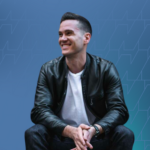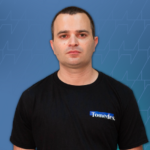How Matt & Karla Bailey’s Travel Blog Earns 6 Figures a Year From SEO, YouTube, and Email Marketing

When you buy something through one of the links on our site, we may earn an affiliate commission.
Matt Bailey, originally from Canada, set off to travel the world for a few years with his wife, Karla, from Mexico City. Together they visited 35 countries, and when they returned home, they traveled around Canada.
This provided the inspiration to create their website, Must Do Canada. Originally it was just a side hustle with no concrete plan, but little by little it started to gain traffic.
Then Matt had a very clever idea for the website, and he, Karla, and a videographer set out to create unique content for the site. This really set the wheels in motion, as they started to build their authority on YouTube.
A few years later they went full-time with their site. Today, Must Do Canada is one of the top travel websites and YouTube channels for Canadian travel, and they’re earning 6 figures a year.
Keep reading to find out:
- How he started traveling the world
- What other websites he created prior to his Canada site
- What clever content creation idea he had for YouTube when he started
- Where his income comes from
- How much traffic his site gets
- His top marketing strategies
- His thoughts on SEO
- His keyword research approach
- How he views link building
- His content creation process
- How he builds his email list
- His favorite resources and tools
- His main challenge
- His most important accomplishment
- His biggest mistake
- His advice for other entrepreneurs
Contents
- Meet Matt Bailey
- Why He Created His Site
- How Much Money He’s Making
- Matt’s Main Marketing Strategy
- His Thoughts on SEO
- Matt’s Content Creation Process
- His Email List
- His Favorite Resources
- His Go-To Tools
- Matt’s Main Challenge
- His Most Important Accomplishment
- What He Wishes He Knew When He Started
- His Biggest Mistake
- His Advice for Other Entrepreneurs
Meet Matt Bailey
I grew up in a small mining town in Northern Alberta called Fort McMurray. My wife often refers to me as the quintessential Canadian, as I grew up in the north, played hockey, and often walked home from parties under the Northern Lights.
As a kid, my dad often brought me quadding or snowmobiling into the backcountry, staying at random cabins and just enjoying the outdoors.
My wife has a completely different background, as she’s from Mexico City, which is one of the largest and most populated cities in the world. So her life did not feature much wilderness.
However, after meeting me and moving to Canada, she totally fell in love with the outdoors and it’s kind of cool that we can share different perspectives with our audience.
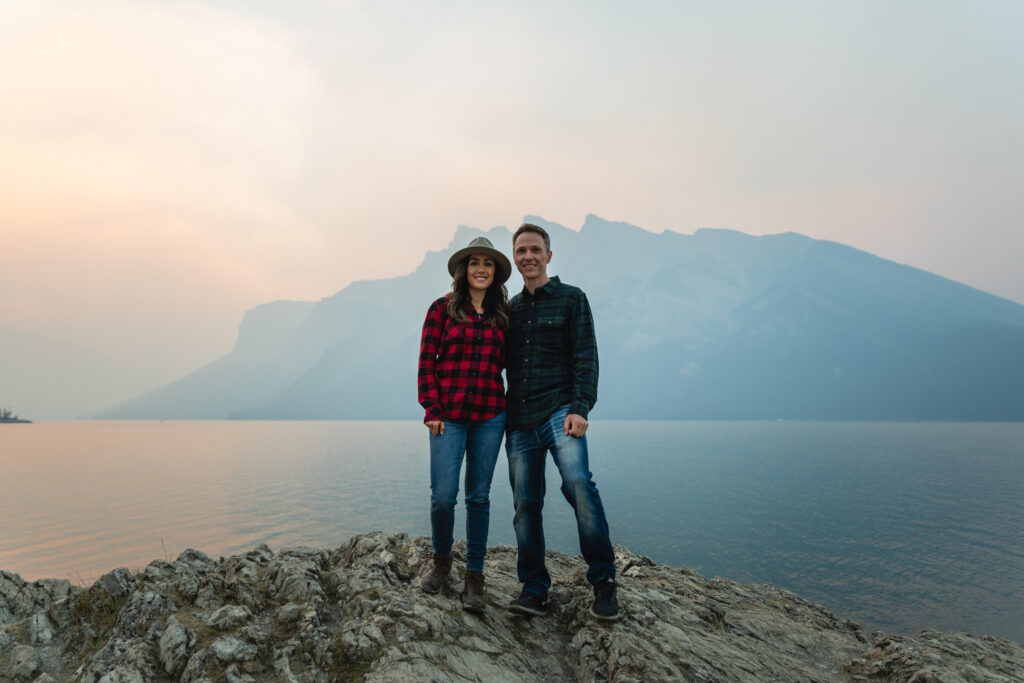
This year, however, we also welcomed two twin girls to the family, so once they get a bit older, they’ll be joining us on trips. In fact, we already have a winter trip in the mountains planned for when they’re 6 months old.
Why He Created His Site
When my wife moved to Canada, she wasn’t allowed to work for an entire year as she needed permanent residence. This made life quite boring for her, especially after coming from the corporate world in Mexico City.
Meanwhile, I was aching to travel the world, and my university was offering a semester abroad. So, instead of waiting around, I chose to do my last semester of university in Malaysia and we went to Southeast Asia for almost all of 2012.
Although I had backpacked to Australia, Indonesia, and New Zealand in 2009, this trip with my wife really inspired us to keep traveling the world, which is what we did, traveling to about 35 countries over the next four years. We would basically come home for 5-6 months, work as much as we could, save as much as we could, and then travel again.
At the same time, I’ve always been interested in business and entrepreneurship, and after learning about the online world, I felt that creating an online business was the best path forward.
I already had a personal website called Live Limitless where I was sharing travel stories, bucket list goals, and things like that. Then, as I got more into travel, I got into the world of travel hacking, which is basically learning how to earn and maximize travel miles.
This led to what was really my first online business: CanadianFreeFlyers.com. The website is still technically alive but the business is no longer active. I was actually the first person to launch a travel hacking membership site for Canadians way back in 2012.
Basically, for a fee, I would teach them how to earn hundreds of thousands of miles and how to redeem them for dream trips around the world. My first “big break” was getting interviewed in a full-page spread in the Toronto Star, which landed me about $5000 in sales the next day. This was a big deal to me at the time and it was a bit of an adventure too.
I did the interview via Zoom from Laos and launched the course from a hotel room in China. Ironically, my launch almost got ruined because of the firewall in China. I wasn’t able to see the article or access my website from there, but thankfully, it worked out.
During those travel years, we also did a road trip across Canada with my parents. Since we have family in Montreal and in Newfoundland, we got together and traveled for 6 weeks, experiencing lots of Canada’s top attractions along the way.
This is what inspired me to start Must Do Canada in 2013. At the time, it was really a side hustle and sort of a hobby with no real plan of what to do with it. But I kept writing for it now and then, slowly growing the traffic along the way.
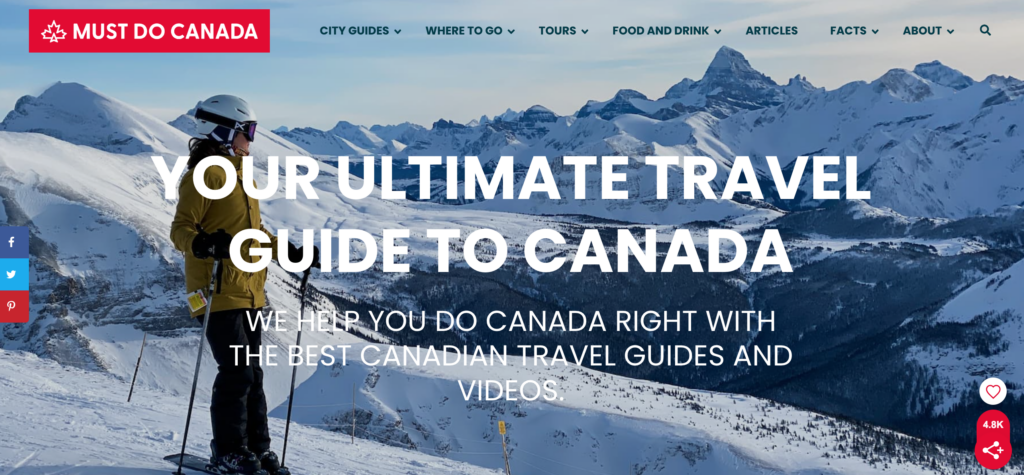
Fast forward to 2016, we decided to end “full-time travel” and get a career in marketing, which is what we both studied. Unfortunately, the economy in our city collapsed that year and there were no jobs to be found.
However, 2017 was just around the corner and Canada was heavily promoting its 150th birthday. So, I came up with the idea to do a 150-day road trip across the country to make a documentary about what makes Canada special.
Since we had no idea about video in those days, we pitched the idea to a young videographer we had just met at a side job. The idea would be to visit each province and territory, interviewing people along the way and experiencing the best of each destination.
I would pitch it to companies and try to find a sponsor to cover the costs, including the cost of hiring him to join us for five months. He agreed and we shot our pilot episode in Lake Louise during the winter.
Unfortunately, we missed all the grants that were being given out, but I sent the video and a pitch to hundreds of companies. A few expressed interest but the only one that ended up sponsoring the whole trip was Best Western Hotels.
The timing was perfect as they were looking to get involved with the big celebrations and time was really winding down. After making a rough plan, we flew to Newfoundland, bought a used Honda Pilot, and began the adventure on May 15th, starting from the most Easterly point in Canada. Right after we started, however, we decided to change it to a YouTube series with one episode for each province.
This worked out well, and by the end of the road trip on October 11th, we had 12 episodes and YouTube became our fastest-growing platform.
Although we had no plans to continue, we didn’t want to let the success go to waste, so we doubled down on it, learned how to do video ourselves, and it became a pillar of our business.
It took us a couple of years though, as the business didn’t really become full-time for us until late 2020.
Today, we have one of the top travel websites for Canadian travel, one of the top YouTube channels for Canadian travel, the top travel newsletter in the country, and a local newsletter for our home city of Calgary as well.
How Much Money He’s Making
It’s been climbing ever since 2020 and we now have revenue of around $150,000 or more. Of course, we have some expenses as well, but overall, it’s going up each year.
We’ve had to take a bit of a hit this year, however, as we just had twins and couldn’t do as many videos, but we expect to be back in full swing in 2024.
At the same time, I’ve grown the website substantially in the last couple of years and added our Canadian newsletter, which now has 75,000 subscribers.
Although we do make some ad revenue from YouTube, most of our income comes from sponsors, which are usually tourism boards or bigger brands like Canadian Tire and Toyota.
For the website, most of the revenue comes from ads, but we also do sponsored posts every now and then. We’re also growing our affiliate revenue now and expect that to be one of our top income sources within a year. For the newsletter, all the revenue comes from advertising.
As for traffic, this year, we hit about 150,000 unique sessions each month, so that was a big thing for us. Because we actually travel across the country every year and cover a lot of ground, we get a lot of links from trustworthy sources, so I think Google trusts our content a lot. However, we still have lots of work to do.
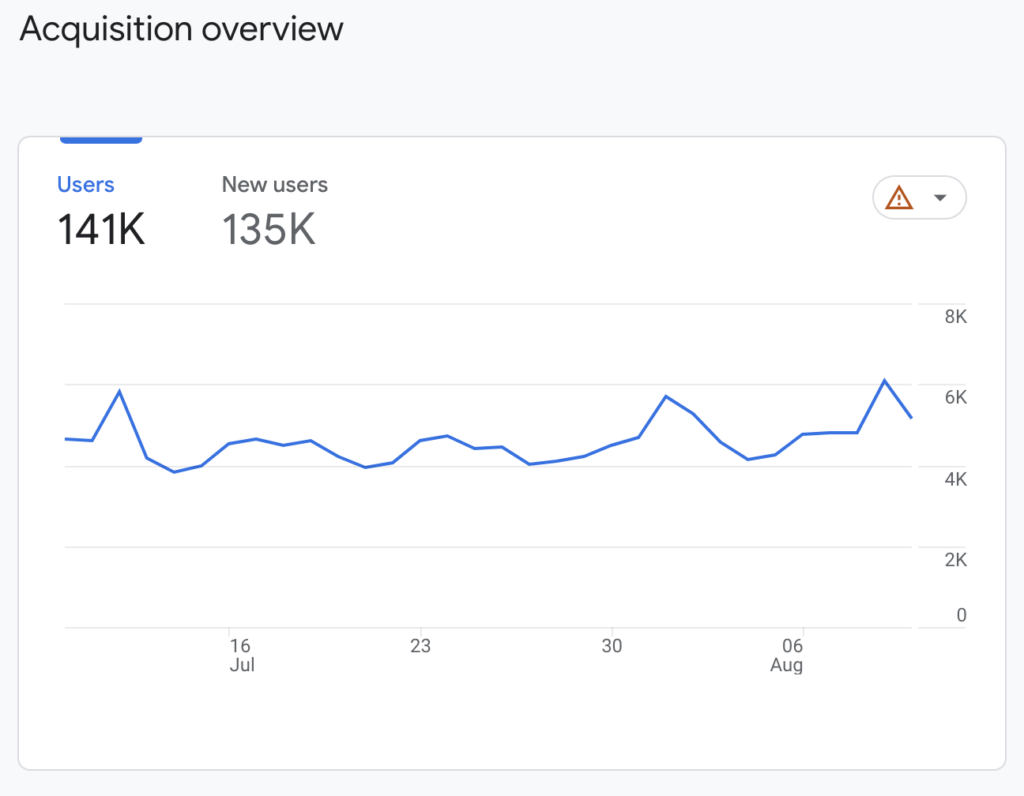
Our YouTube channel currently has 95,000 subscribers and about 120,000 views each month. Our newsletter has around 65,000 subs with a 45-50% open rate.
Some weeks, I probably spend 60+ hours on the business. It fluctuates.
When we travel, I spend less time on the computer and more time in front of or behind the camera. But I basically always have my laptop or phone in case I need to do something.
I also send and reply to A LOT of emails. Between us, I would say 100 hours per week on average. Right now, though, we’re learning to do more with less time and also trying to delegate more.
There’s no way we could work that much at the moment while raising two little girls.
Matt’s Main Marketing Strategy
I would have to say SEO is the biggest part of our strategy, both with the website and with YouTube.
I think also being focused on a niche allows us to gain authority faster. Our newsletter also plays a big role now that we have a large amount of subscribers. Social media would probably be our third.
His Thoughts on SEO
SEO is very important. Once I learned a lot about SEO and started focusing on it, traffic grew much faster. I learned SEO by reading a variety of blog articles, such as Digital Nomad Wannabe, as well as signing up for a course like SEO Blueprint.
I also join Facebook groups and ask a lot of questions. Digital Nomad Wannabe offers a good one and it’s free. Typically, I just find keywords that people are searching for, focus on just one at a time, and build content around that.
For example, if we visit a certain city, I’ll take that story and intertwine it with the keyword(s) people are searching for. Links are also important, but I think we’re at the point now where they don’t matter as much.
I used to spend a lot of time trying to build out links, but now I try to just focus on the content and let the links come naturally.
Keyword Research
Since we actually travel the country, I typically start with the destinations I’m visiting and search for keywords people use about that place. However, I also try to work down from the provincial level.
We might start with the province itself, move to the cities, then the towns, etc. We aim for keywords that we think we can rank for, but if we feel our audience would like a certain topic, we’ll write it anyway, even if we might not rank.
We sort of like to balance it between keywords and what we think would be the most helpful to our readers.
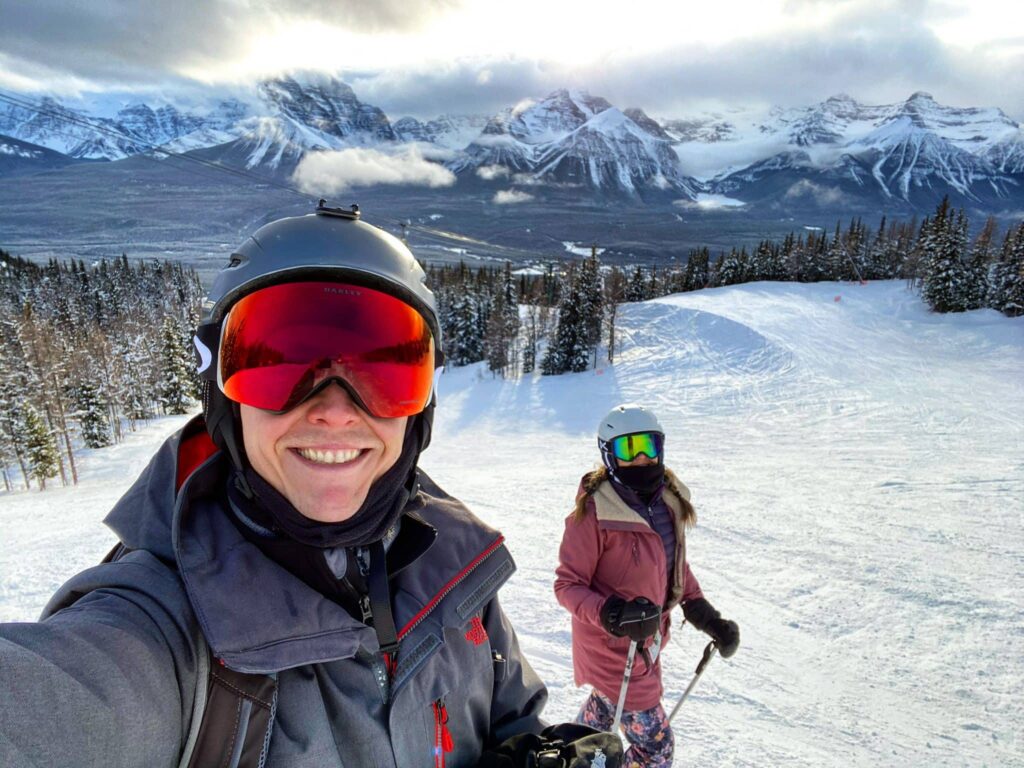
Link Building
Link building, especially in the beginning, is quite crucial.
We typically start by linking from all of our social channels and maybe some blogging friends we have. Then, we’ll also try to work with bloggers so that they can link to us when necessary and we can link to them.
For this, it helps to have other blogs. Our main site is Must Do Canada, but I also run Live Limitless, which is a personal site I don’t spend much time on anymore. However, it does have articles about world travel and other topics, so it helps when linking to other people.
Ultimately, the best links will come from websites with a strong DA. If you can get links from media outlets or big brands, that will help a lot more than a blog.
These can be tough, but we have had some luck with HARO, which allows you to respond to queries from journalists. At the same time, we don’t get much from it and nowadays, we find it to be a waste of time.
Thankfully, since our blog is 10 years old now, and because we’ve done some cool projects, such as our 150-day road trip across Canada, we’ve earned links from big platforms such as CBC, Vogue, Globe & Mail, etc.
I’ve heard that links start to mean less once your website is seen as an authority site.
Matt’s Content Creation Process
I started with big listicle articles for provinces and then for cities, slowly going deeper into each place.
Since we travel across the country a lot, I tend to lean more into writing about the places I visit, but utilizing keywords to also get noticed by Google. Other times, I just dig as deep as I can into each destination and continue building out as much content as possible.
As of now, I have 308 articles on Must Do Canada.
Since Karla is from Mexico and I am from northern Canada, I think that also creates something special. Although our strongest audience is Canadian, we get a lot of people from other countries consuming our content and we get a lot of people who actually use our videos to immigrate to Canada.
In fact, we’ve been stopped on the streets of Calgary, in shopping malls, on hiking trails, and even in the Vancouver International Airport by people who watch our videos and from people who thank us for helping inspire them to actually move to Canada.
We’re not even that big in the YouTube world, but maybe because of our niche, people recognize us.
We’ve also learned that many teachers of grade 5 and 6 classes use our videos for their social studies classes to educate the children on the different regions of Canada.
During Covid, we actually did a Zoom call with a classroom in Toronto and the kids were so excited to see us and to ask us questions. They were also super interested in talking to Karla about life in Mexico.
His Email List
Right now, we have two email lists. Our biggest is the Must Do Canada Weekly Goose, which has about 75,000 subscribers and a 45-50% open rate. It’s mostly a Canadian audience and we’ve grown by doing giveaways, collaborations, promoting it on our website, promoting it on YouTube, etc.
Giveaways can work well, but they can also be full of low-quality subscribers, many of whom won’t open emails. So, it’s a bit of a balancing act and trying to really focus on an audience that wants your emails.
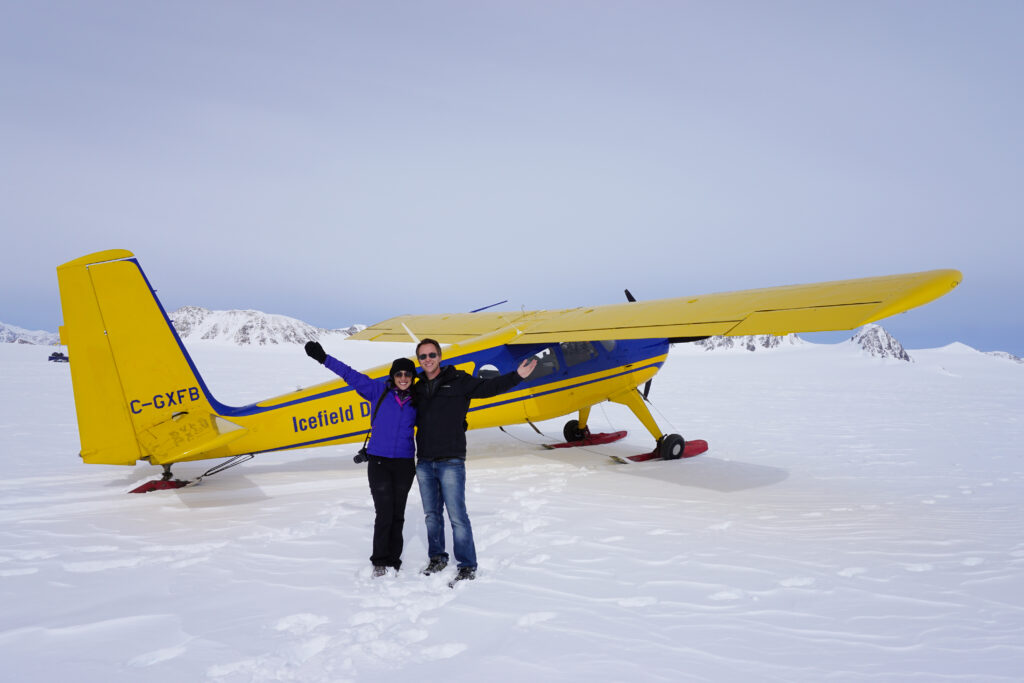
His Favorite Resources
I might be a bit weird in this regard, but I don’t read a lot of entrepreneurial books or watch many entrepreneurial channels anymore.
However, in the beginning, perhaps the most life-changing book was the 4-Hour Work Week by Tim Ferriss. This is really what inspired me to build a business online and to start thinking about the lifestyle I wish to have.
I’m not sure if it’s outdated now, but the mindset is still very valuable.
I also loved Vagabonding by Ralf Potts for those interested in long-term travel.
There are also quite a few books from Chris Guillebeau, who also runs the website called The Art of Non-Conformity. While I don’t visit much anymore, he offers so much advice on building side hustles and passion businesses. He used to run a big event called the World Domination Summit in Portland, Oregon, which we’ve attended as well.
A friend of mine also has a newsletter called Creator Boom, which sends out lots of great resources each week for those looking to create a content-based business.
Something I’ve done a lot is reach out to people doing things I want to do. I love to ask them how they did it and try to learn from them as best I can.
His Go-To Tools
My laptop is probably my most important tool. I can’t imagine doing work without it.
For us, the cameras as well, although I’d probably put the phone ahead of them, just because they sort of double as a camera and a mini laptop.
Using a keyword tool, such as KeySearch, has been very valuable as well.
Matt’s Main Challenge
Focusing on Google has been good but it’s also a never-ending game. Basically, there can only be one winner for each keyword. Most people click on the first link. So, imagine all the blogs out there, millions really, all competing to be first in Google.
I think there’s a lot of risk to this, just like there’s a lot of risk to building a business solely on a third-party platform like Facebook or Instagram. So, dealing with that day in and day out is certainly a challenge.
Another one is finding sponsors. Now that we’ve built our brand for a few years, it’s certainly easier, but doing all of the sales as a one-person team at the moment is beginning to be a bit much.
Oh, and finding time for everything. Where can I buy more time?
His Most Important Accomplishment
I think that the initial 150-day road trip was the #1 accomplishment for us. It was really just a simple idea, but the real challenge was actually following through with it.
When I think back, it’s almost hard to imagine all the work that went into it.
We had to find sponsors, plan out a 150-day trip, work with hundreds of local sponsors for hotels and activities, and coordinate it all in terms of videos, articles, and social media, while also reaching out to get interviewed in national news such as the CBC.
We had to drive 27,000 km and time it all with the weather and the activities and big events like Canada Day in Ottawa. It was a really insanely big thing that the three of us did.
We drove together for five months and we never really had a day off. When I think back, it’s quite remarkable that we pulled it off as a 3-person team.
I'm also proud of the fact that we won the TIAC (Tourism Industry Association of Canada) Travel Media Award in 2022, which was a big event in Ottawa.
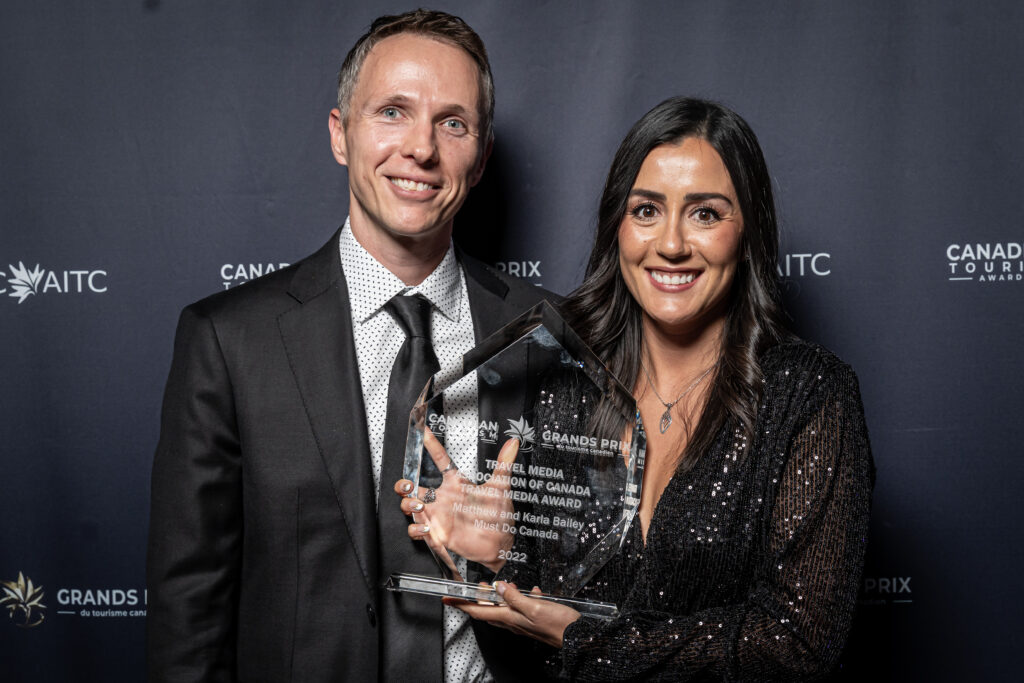
What He Wishes He Knew When He Started
I wish I had focused on the business a lot earlier. Starting is always good, but without having a plan, such as SEO or whatever, years can go by with no results. I’d love to have those years back, but perhaps I needed that loss of time to learn this lesson.
Even if things change, it’s a good idea to create a roadmap from the beginning. It doesn’t have to be complicated. Just determine what you’re selling or creating and who it’s for.
Where can you find them and what will you sell? If it’s content, I’d even build out a content calendar right from the beginning and then stick to a schedule of when to publish it. This is what separates amateurs from professionals.
Decide to be a professional right off the bat.
His Biggest Mistake
Wasting time in the beginning by working without a goal, or trying too many things is my biggest mistake. I’m still guilty of the second one.
I have so many ideas, but without a big team, it’s really easy to spread yourself too thin, which is something I’ve done many times. I’m much better now, but I still catch myself doing it now and then.
His Advice for Other Entrepreneurs
First off, something that I think applies to anything you want to do that’s important, whether it’s a business or a fitness program, is sticking to it. Oftentimes, the biggest deciding factor of success is just sticking with something long enough to see it through.
This doesn’t just apply to business.
Back in 2008, I did a 12-week fitness challenge. I think I learned more about perseverance and determination from that challenge than I did from anything else. It was really hard, but just by sticking to it and making myself go no matter how tired I was, I dramatically changed my lifestyle and my body. The same thing applies to anything you want to achieve.
At the same time, you really need to determine what you want. In all honesty, entrepreneurship is very hard and is not for everyone. There’s certainly something nice about working with a team and getting a paycheck and being responsible for one job role instead of 20.
If you do decide to go down the entrepreneurship route, I’d say two more things.
Try and do it as a side hustle until you build it up to be strong enough to overtake your job. Second, create a simple plan as to what you’re going to do. I wish I had done this in the beginning.
Who is your audience? What is your product? Who is your competition? What can you do better? What are you selling? Where will you find your audience?
Things might change along the way, but you’ll still do better if you have a roadmap to follow right from the beginning.
Oh, and don’t be shy to reach out to people doing what you want to do. You’d be surprised how many of them will respond to you.
Want to learn step-by-step how I built my Niche Site Empire up to a full-time income?
Yes! I Love to Learn
Learn How I Built My Niche Site Empire to a Full-time Income
- How to Pick the Right Keywords at the START, and avoid the losers
- How to Scale and Outsource 90% of the Work, Allowing Your Empire to GROW Without You
- How to Build a Site That Gets REAL TRAFFIC FROM GOOGLE (every. single. day.)
- Subscribe to the Niche Pursuits Newsletter delivered with value 3X per week
My top recommendations



